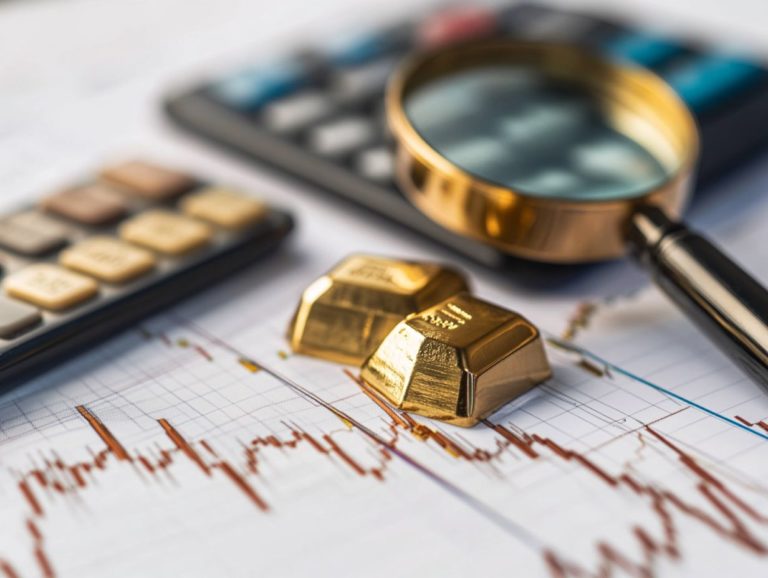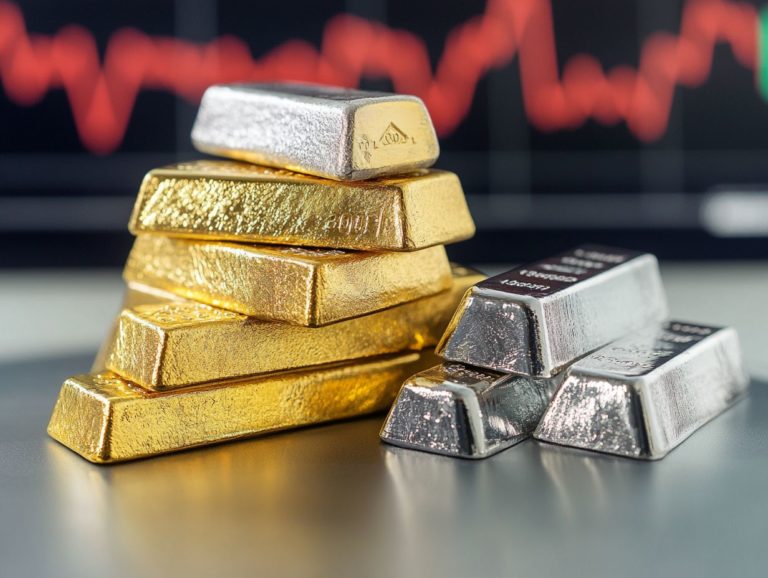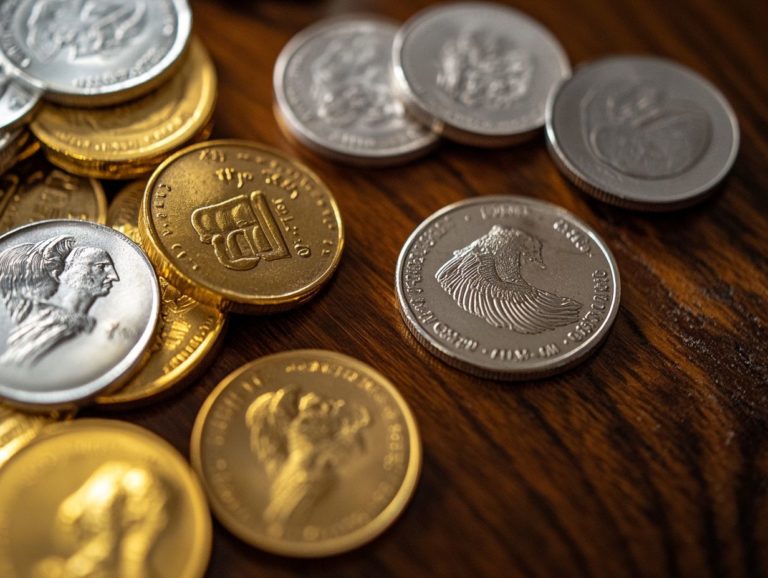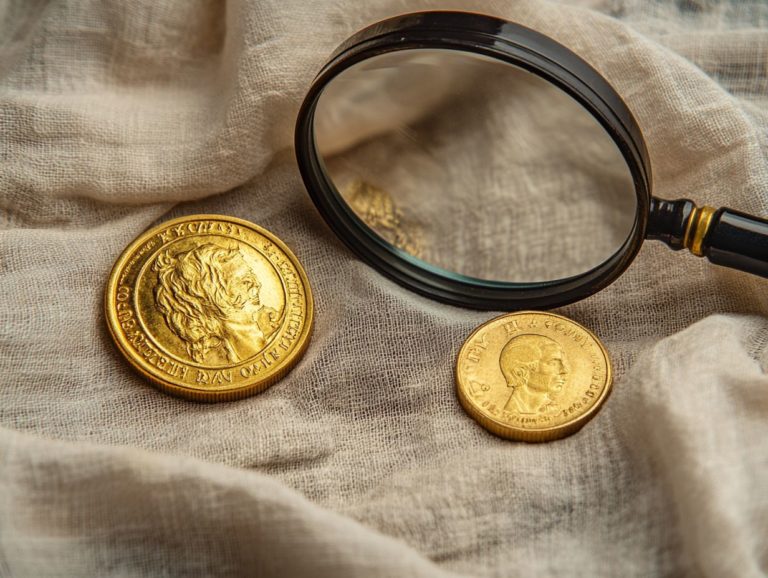How Geology Affects Precious Metal Value
Investors are always drawn to precious metals, not just for their allure but also for their intrinsic value, shaped by various geological factors.
This article explores the fundamentals of precious metals, defining what determines their worth and how geological processes affect their availability. You ll discover the types of deposits that yield these coveted metals and explore the economic implications of mining practices.
We will also look at environmental factors and sustainability practices within the industry.
Join us as we unravel the intricate relationship between geology and the value of precious metals, providing insights that could enhance your understanding and inform your investment decisions.
Contents
Key Takeaways:

- Precious metals are rare, naturally occurring elements with high economic value.
- Geological factors such as deposit type and formation processes greatly influence the availability and value of precious metals.
- Economic factors like mining techniques and market demand also play a crucial role in determining the value of precious metals.
The Basics of Precious Metals
Precious metals gold, silver, platinum, and palladium hold substantial economic significance across various industries. These metals are highly sought after for both investment opportunities and their industrial applications.
Their distinct properties and natural rarity enhance their market value, prompting extensive exploration efforts to uncover lucrative mineral deposits. Countries like South Africa, Australia, and Russia are key players in the global precious metals market, attracting mining companies and investors eager to capitalize on these invaluable resources.
Defining Precious Metals and Their Value
Precious metals are defined as rare metallic elements that hold significant economic value. They are not just investment options but also important in various industrial applications.
These metals gold, silver, platinum, and palladium boast unique characteristics like high density, malleability, and impressive resistance to corrosion, all enhancing their desirability.
Their natural scarcity elevates their worth and drives market demand, especially as investors look for safe havens during economic uncertainty. With applications ranging from electronics to jewelry manufacturing, their importance is undeniable.
They often act as a hedge against inflation, attracting those looking to diversify their portfolios in a fluctuating market.
Geological Factors Affecting Precious Metal Value
The value of precious metals is profoundly shaped by geological factors, including the processes that contribute to their formation and the unique mineral composition of various deposits.
When engaging in geological exploration, the goal is to identify and assess these precious metal deposits. These can vary greatly based on the geological structure and characteristics of the region.
Understanding these factors helps mining companies choose the best extraction methods. This knowledge also impacts the economic success of mining operations in diverse areas, including South Africa, Australia, and the United States.
Types of Deposits and Their Characteristics
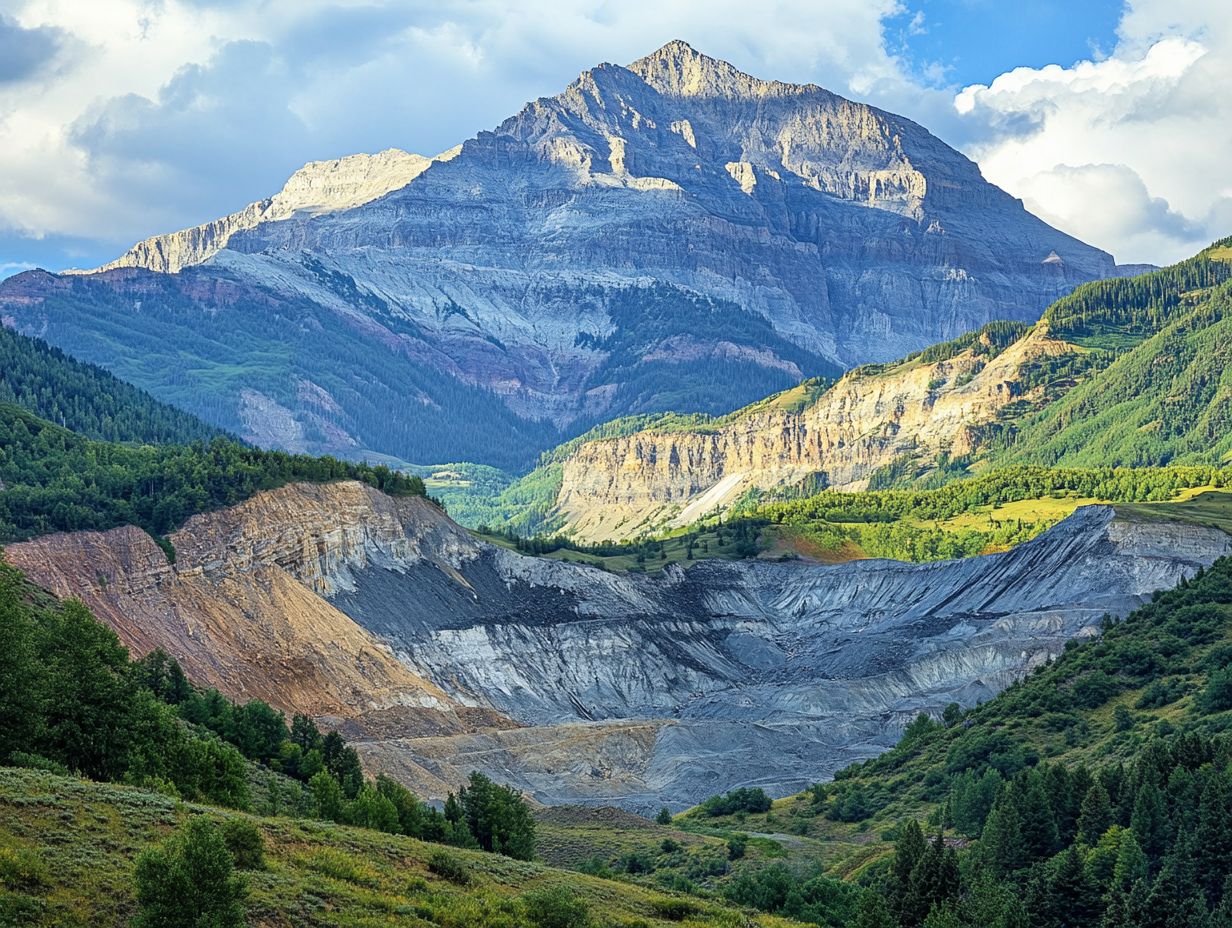
Deposits such as those containing gold, silver, and platinum group metals each have unique characteristics that significantly influence their extraction and economic feasibility.
Understanding these deposits is essential for effective mining strategies. For example, alluvial deposits, often found in riverbeds or floodplains, are concentrated by natural processes and can be mined using simple techniques like panning or dredging.
In contrast, lode deposits are embedded in hard rock formations and require more advanced extraction methods such as tunneling or open-pit mining.
Volcanic deposits, remnants of ancient volcanic activity, feature unique geological aspects that may necessitate specialized drilling techniques. Each deposit type influences not only the mining approach but also profitability and environmental considerations, emphasizing the complex relationship between geology and resource extraction.
Impact of Geological Processes on Formation and Availability
Geological processes are instrumental in the formation and availability of precious metals. Hydrothermal processes and volcanic activity serve as significant contributors to their deposits.
These intricate processes think tectonic plate movements, volcanic eruptions, and the cooling of magma create ideal environments for concentrating valuable minerals. As rocks undergo weathering and erosion, precious metals are released and transported to various locations. This leads to their accumulation in riverbeds or sedimentary layers.
This natural progression directly influences how accessible these metals are. It determines the ease with which miners can extract them. You need to consider the environmental impact of mining practices. Geological processes often dictate the necessary balance to minimize ecological disruption while maximizing resource recovery.
How Geology Drives the Value of Precious Metals
The economic implications of geology on precious metals are significant. They shape not only the viability of mining companies but also the extraction methods they choose to employ in response to market demand and investment opportunities.
Understanding these dynamics is essential for navigating the complexities of the industry.
Mining and Extraction Techniques
Mining and extraction techniques, such as underground and open-pit mining, play an important role in accessing precious metal deposits. They also determine the economic feasibility for mining companies.
These methods are not one-size-fits-all; they vary significantly in approach and suitability based on the type of mineral and the geological conditions at hand.
For example, underground mining enables deeper material extraction with a smaller surface footprint an advantage in densely populated areas. However, it often comes with challenges, including higher operational costs and safety risks.
In contrast, open-pit mining is generally easier and more cost-effective to implement. Yet, it can severely disrupt the surrounding environment, drawing closer scrutiny from regulators.
By carefully analyzing geological reports, you can pinpoint which technique presents the most promising investment opportunities. This allows you to strike a balance between economic viability and environmental responsibility.
Market Demand and Supply
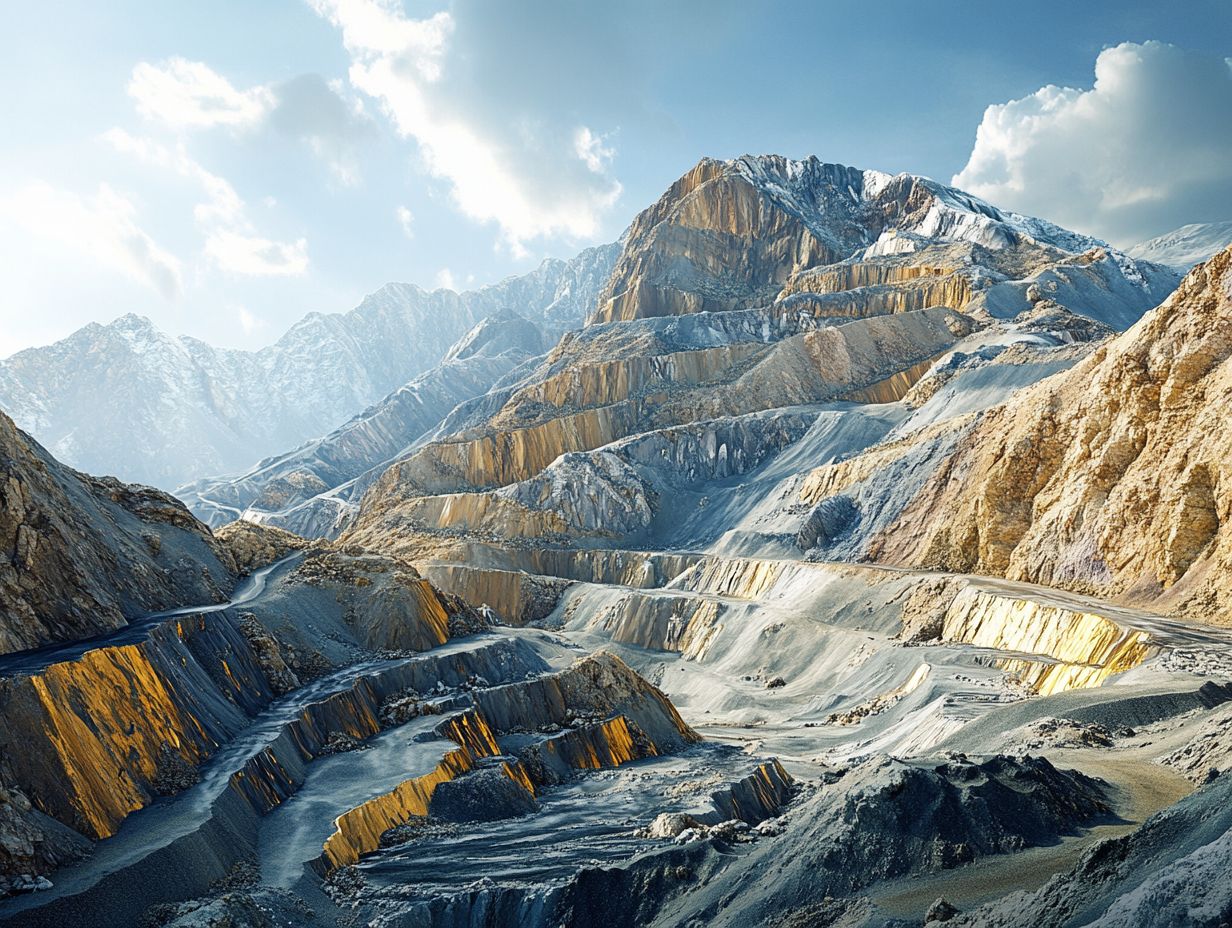
The market demand for precious metals plays an important role in their economic viability. Investment opportunities reflect trends in both industrial applications and consumer preferences.
This complex interaction relies on various factors, including technological advancements that unveil new applications for precious metals, from electronics to renewable energy solutions.
The increasing focus on sustainability further fuels the demand for these materials. Industries actively pursue environmentally friendly alternatives.
Fluctuations in global economies and geopolitical uncertainties can dramatically alter market dynamics. They influence both trading and purchasing behaviors tied to these valuable resources.
Therefore, grasping these factors is essential for anyone looking to successfully navigate the complexities of the precious metals market.
Environmental Considerations
Environmental considerations are becoming ever more essential in the mining sector. The impact of mining operations on the environment demands a commitment to sustainable practices and strict adherence to regulations to mitigate damage effectively.
Effects of Mining and Processing on the Environment
- The effects of mining and processing on the environment can be quite significant. This includes soil degradation, water pollution, and habitat destruction. This reality underscores the need for a strong emphasis on sustainability.
- Different mining methods, such as open-pit and underground techniques, each come with their unique environmental footprints. Open-pit mining often leads to large-scale alterations of the landscape, while underground mining can result in subsidence (the gradual caving in or sinking of an area of land) and groundwater contamination.
- Both methods can release hazardous chemicals during processing, which may leach into nearby waterways.
- Understanding these consequences is vital for implementing effective regulations aimed at minimizing impacts. The mining industry must embrace sustainable practices, such as efficient waste management and the rehabilitation of mined areas.
- This is necessary not only to meet environmental standards but also to protect biodiversity and promote ecosystem recovery.
Sustainable Practices and Regulations
Sustainable practices are vital for minimizing the environmental impact of mining. We must ensure that extracting precious metals doesn’t harm our ecosystems.
The industry is embracing waste management strategies that focus on recycling. These strategies aim to reduce harmful byproducts.
Efforts to rehabilitate mining sites are underway. These efforts help restore natural landscapes, aiding biodiversity recovery and supporting local communities.
Regulatory frameworks enforce these sustainable practices. They compel mining companies to follow strict environmental guidelines.
This integration ensures ecological considerations are part of every mining stage. It’s a responsible approach that benefits both the environment and society.
Frequently Asked Questions
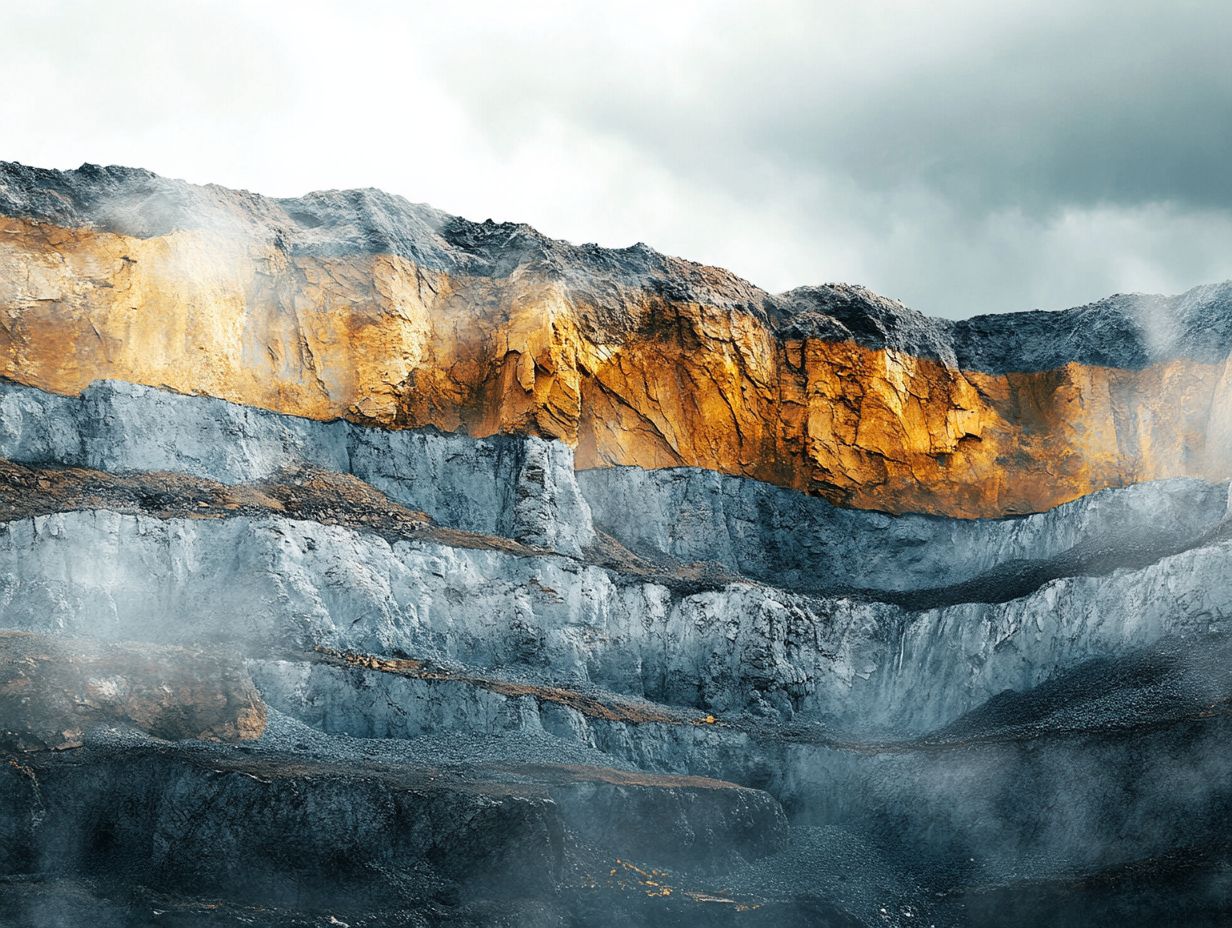
How does geology affect the value of precious metals?
Geology plays a key role in determining the value of precious metals. It affects their abundance, accessibility, and purity.
What geological factors influence abundance?
The abundance of precious metals depends on rock formations, mineral deposits, and geological events like volcanic activity. These factors determine metal concentrations at specific locations.
How does purity impact value?
The purity of precious metals is crucial for their value. Purer metals are rarer and more valuable.
What role does accessibility play in value?
Accessibility impacts value, as easily extracted metals are often more valuable. Geology affects where these metals are located and how easily they can be extracted.
How do geological events impact value?
Events like volcanic eruptions, earthquakes, and erosion can change the value of precious metals. They may expose new deposits or alter existing ones.
What are some examples of geology affecting metal value?
Tectonic movements can influence gold deposit formation. Weathering and erosion can reveal new silver deposits. Hydrothermal activity also plays a big role in forming metals like platinum and palladium.


